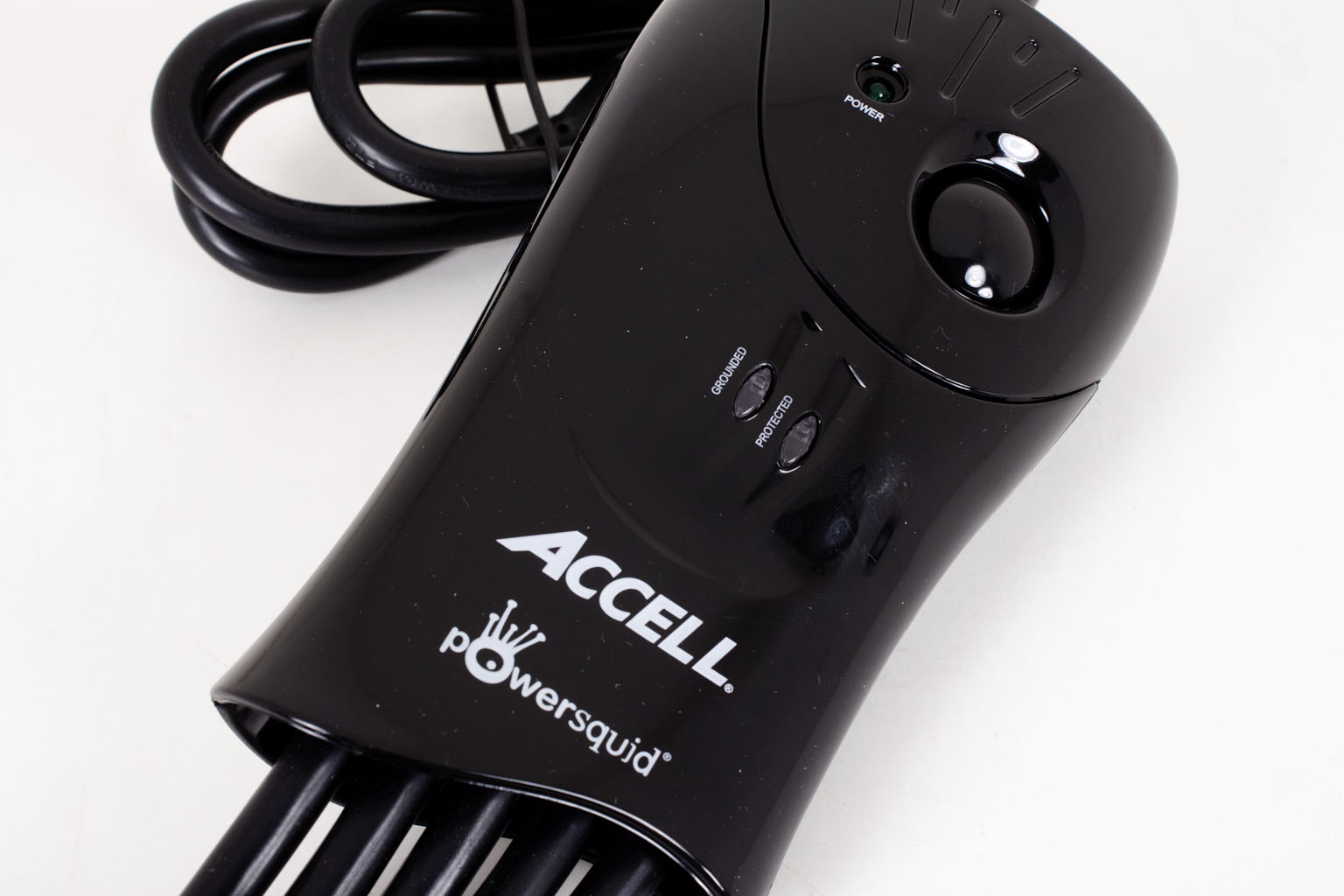Performance -
Performance of a power strip, surge protector or line conditioner is not an easy task. You really have to have something that can show this off (all without killing the product). As we did not want to damage our PowerSquid we did not have the chance to test out the max spike or energy dissipation limits (we also have no way to generate 1080 Joules or 72,000 AMPs at the present time). However we were able to directly test the line conditioning and low level spike issues.
We have an old PSU that when powered on will spike back down the line and pop most 15 AMP breakers. This PSU was actually hit by a low-level surge itself which is why it can do this. We rigged it up to an separated line on its own 15 Amp breaker and plugged both it and the Power Squid into the dual outlet. As soon as we powered on the PSU both the line breaker and the breaker on the PowerSquid popped, but none of the devices plugged into the PowerSquid did (there were four test breakers rated at 7.5 Amps. If any current has passed through at least one of these would have shown a fault after we powered the PowerSquid back on.
For line conditioning we had another winner. For our audio testing we use a Tech On Model “55” Tube Amplifier. On unfiltered power this has a nasty pop and hiss in it that occurs as the power fluctuates. When we plugged the Model “55” into the PowerSquid the popping disappeared entirely even during extended usage. The power filtering also helped to remove a slight strobe effect that was noticeable in our studio lighting.
Overall and with the exception of the max spike and energy dissipation limits the PowerSquid performed exceptionally well.

 As you might imagine we have a rather large number of electronic devices in use in our lab. These range from network switches to access points to tablets and more. Although we did build in surge protection and a good number of isolated outlets into the lab we always like to have more protection and more available plugs to play with. After wading through a number of flat and boring power strips with basic surge protection we started looking for something different. That is when we stumbled across a company called Accell and their PowerSquid Surge Protector.
As you might imagine we have a rather large number of electronic devices in use in our lab. These range from network switches to access points to tablets and more. Although we did build in surge protection and a good number of isolated outlets into the lab we always like to have more protection and more available plugs to play with. After wading through a number of flat and boring power strips with basic surge protection we started looking for something different. That is when we stumbled across a company called Accell and their PowerSquid Surge Protector.

